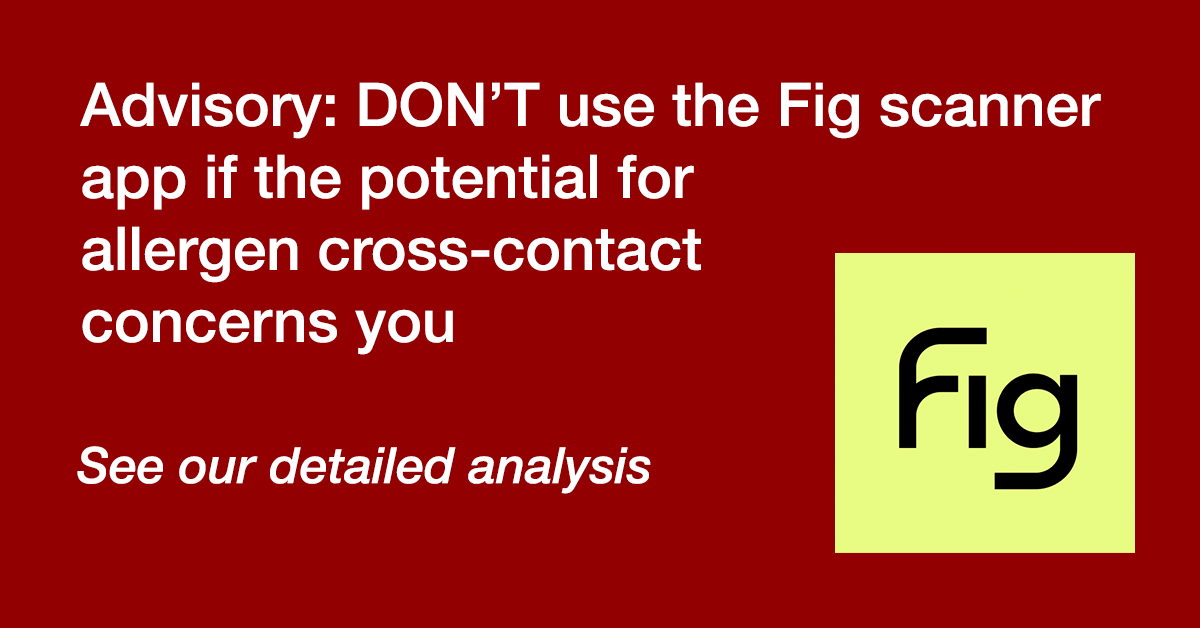Would you give your child a food product if you knew their allergen was processed on the same manufacturing line? If not, read this analysis and avoid the Fig app.
Following an advisory we issued for the Sifter app currently being promoted by FARE, we received a number of requests to perform a similar analysis of Fig, an app that makes the following promise on its website:
Fig is an app that shows you everything you can eat.
Whether you’re gluten-free, have food intolerances, or simply want to cut out certain ingredients, we’ve got you covered.No more restrictions. Only options
We loaded the Fig app from the Google Play store, where it is offered with a 7-day free trial, after which you are charged $50 per year.
Given the app allows you to scan a product’s UPC code to see if it fits your allergen restrictions, we suspect it relies on the same generic product databases as Sifter and previous apps that worked similarly but are now defunct, e.g. ContentChecked and WazInIt.
Those databases are nothing more than repositories of information that appear on the labels, including ingredient lists and precautionary allergen label (PAL) warnings like “may contain traces of milk” and “made on equipment where peanuts are processed.”
The problem is that the FDA does not mandate PAL warnings and provides no guidance regarding when they should be used, how they should be worded, and where they should appear.
This graphic sums up the issue with US allergen labeling regulations well:
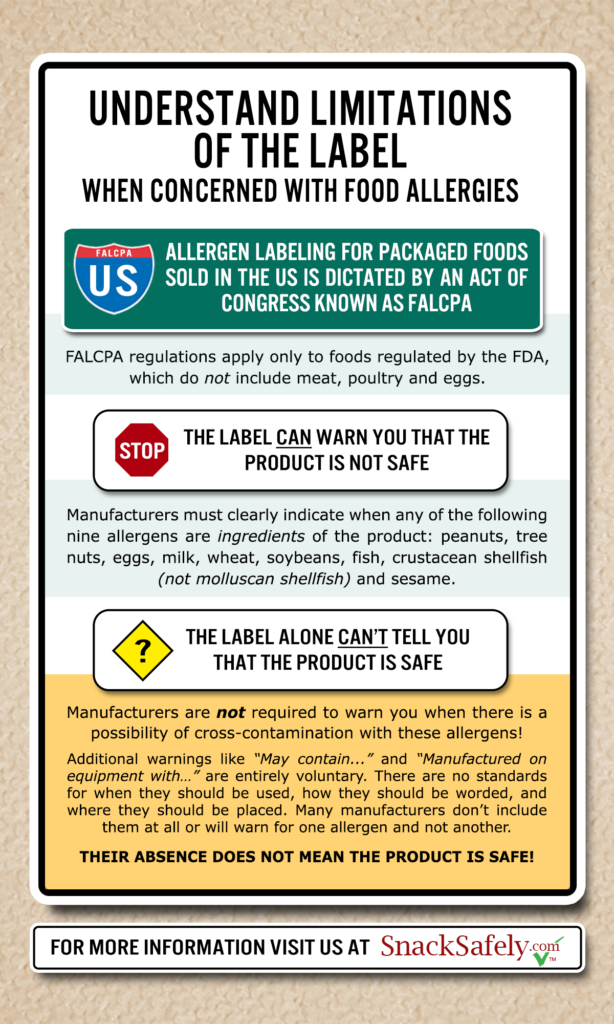
Given the voluntary nature of PAL warnings, apps that rely on them to provide allergic consumers with shopping suggestions don’t have reliable insight into how products are manufactured and are prone to providing wrong/misleading information regarding the potential for cross-contact. Our test shows this is the case for the Fig app.
Our Analysis
After a quick search of SnackSafely’s database, we selected three products we knew were manufactured on shared lines with top allergens based on information provided directly to us by members of our Manufacturer Partnership.
These manufacturers provide us with detailed allergen processing information not required on the label in exchange for listings in our publications, including our family of Safe Snack Guides and our Allergence product screening service. We then compared them with suggestions provided by Fig using a profile that specifies allergies to the Top 9 allergens: peanuts, tree nuts, eggs, milk, soy, wheat, fish, crustacean shellfish, and sesame.
Here follow the results. Note that we condensed each listing to show the relevant data and included red highlighting to call attention to misinformation.
Example 1: Nature’s Earthly Choice Cauliflower Rice
In this example, the Fig app lists the product as having no allergen concerns regarding the potential for cross-contact with any of the Top 9 allergens:
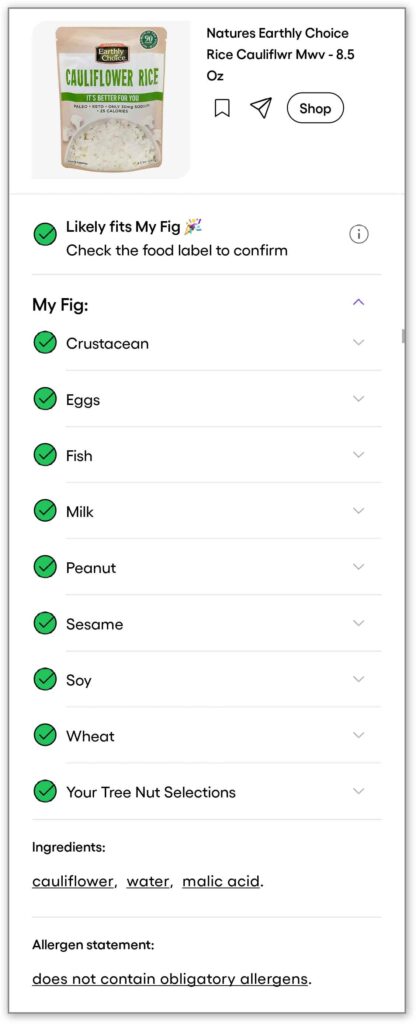
Yet the manufacturer reports to us that wheat and soy are processed in the same line with no special testing for these allergens:
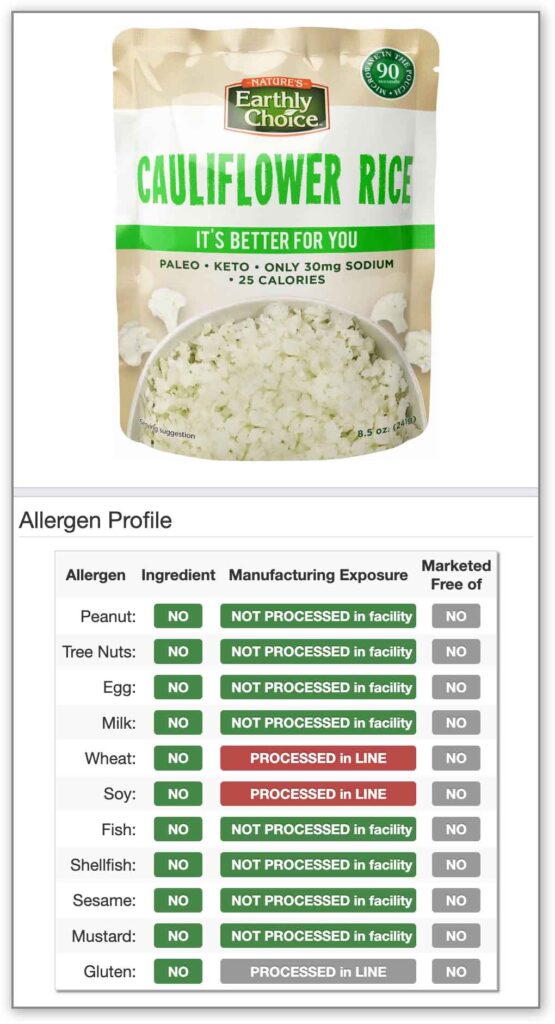
Example 2: Whisps Cheddar Cheese Crisps
In this example, the Fig app correctly shows that milk is an ingredient but indicates no concerns regarding the potential for cross-contact with any of the other Top 9 allergens:
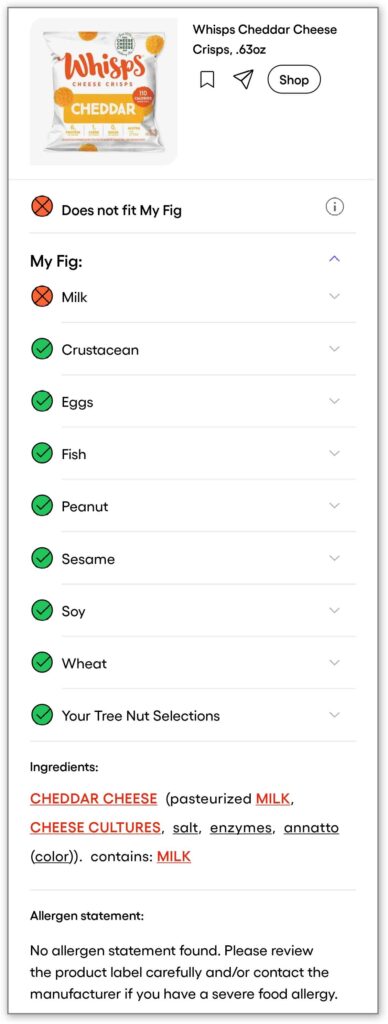
Yet the manufacturer reports to us that eggs, wheat, soy, and sesame are processed in the same line and that tree nuts, fish and crustacean shellfish are processed in the same facility with no special testing for these allergens:
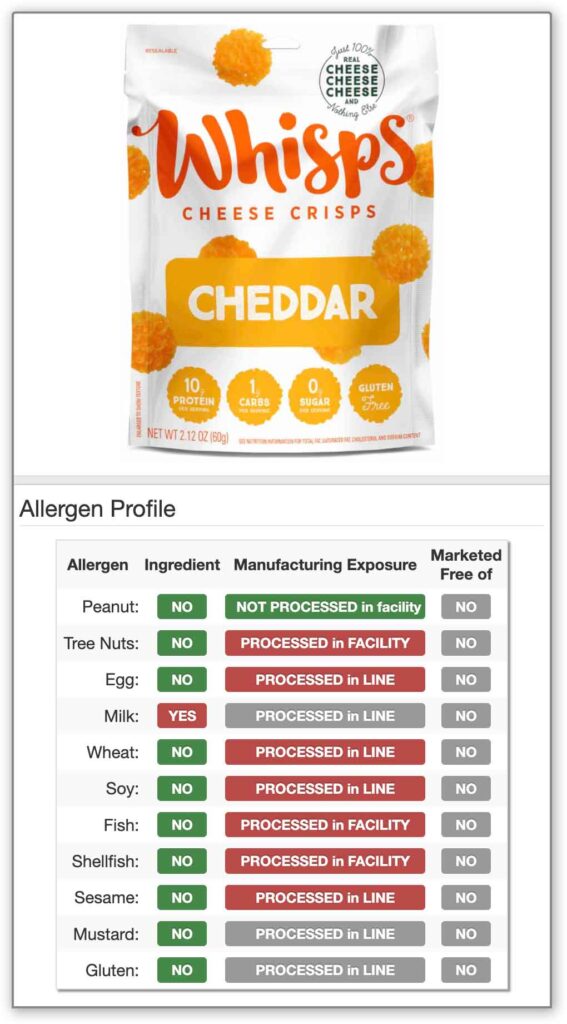
We know the product doesn’t include potential cross-contact warnings, so Fig’s instruction to check the label will provide no additional information. In this case, they also add a disclaimer to check with the manufacturer, but what use is this app if it provides the wrong information and instructs you to check with the manufacturer?
Example 3: Late July Organic Multigrain Sea Salt Tortilla Chips
In this example, the Fig app shows no concerns regarding the potential for cross-contact with any of the other Top 9 allergens:
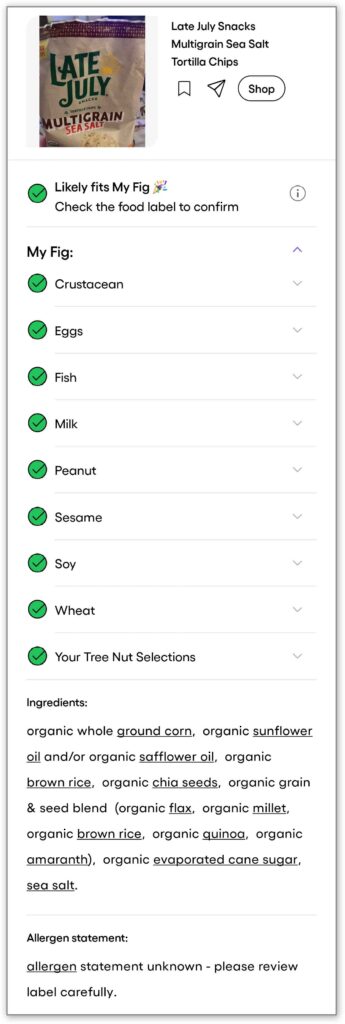
Yet the manufacturer reports to us that tree nuts, milk, soy, and sesame are processed in the same manufacturing line:
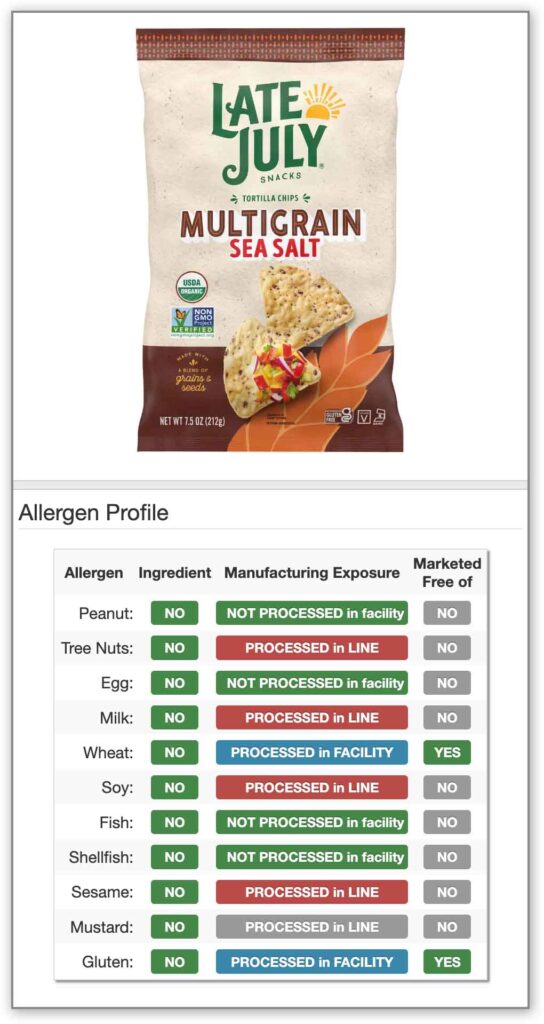
While we know the manufacturer tests for gluten trace in order to achieve a gluten-free certification for the product, they have informed us they do not test for coconut, milk, or sesame trace.
Furthermore, the Fig app instructs us to double-check the label to make sure the information is correct, but this shared line information is not included on the label.
Conclusion
It took just a few minutes to find three products for which the Fig app provides incorrect shared line/facility information, leading us to presume there are hundreds — if not thousands — of other products Fig misrepresents.
As such, we firmly believe the Fig app presents a danger to the allergic community by misinforming users when their allergens of concern are processed in the same line or facility as products they are considering, leading them to make purchases they would otherwise avoid had they known better.
We believe that any app targeted at consumers with allergen restrictions and intolerances and purports to “Show you everything you can eat” should do more to determine whether a product is appropriate for your family.

